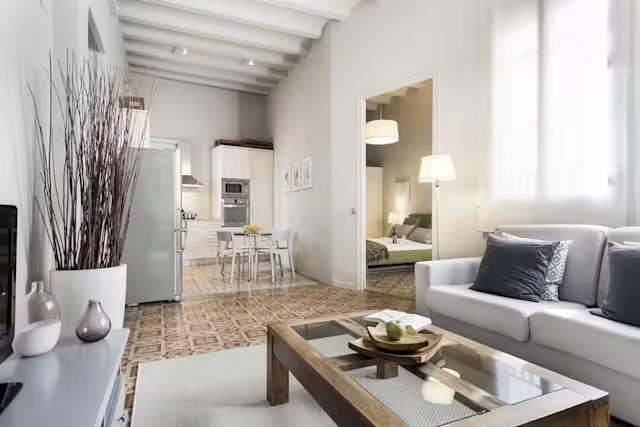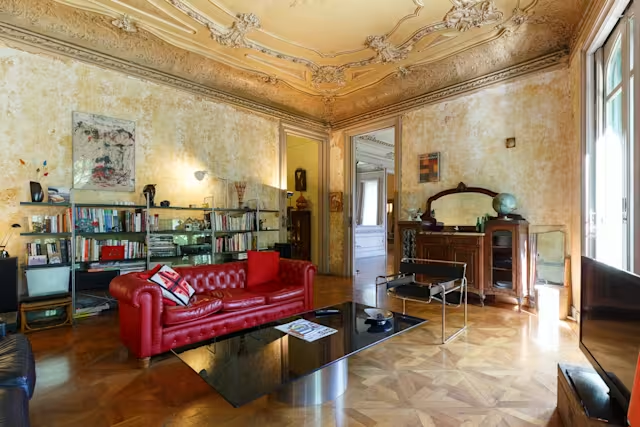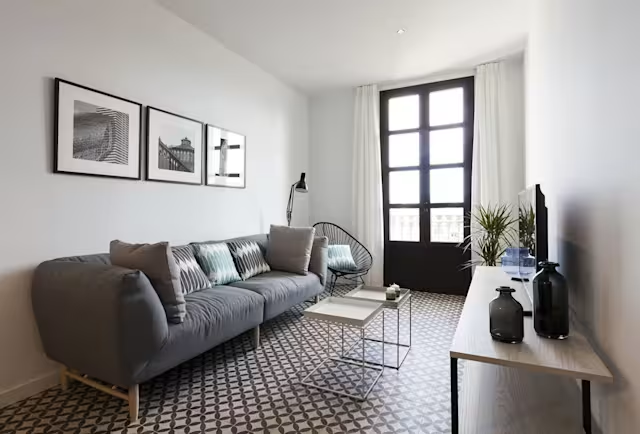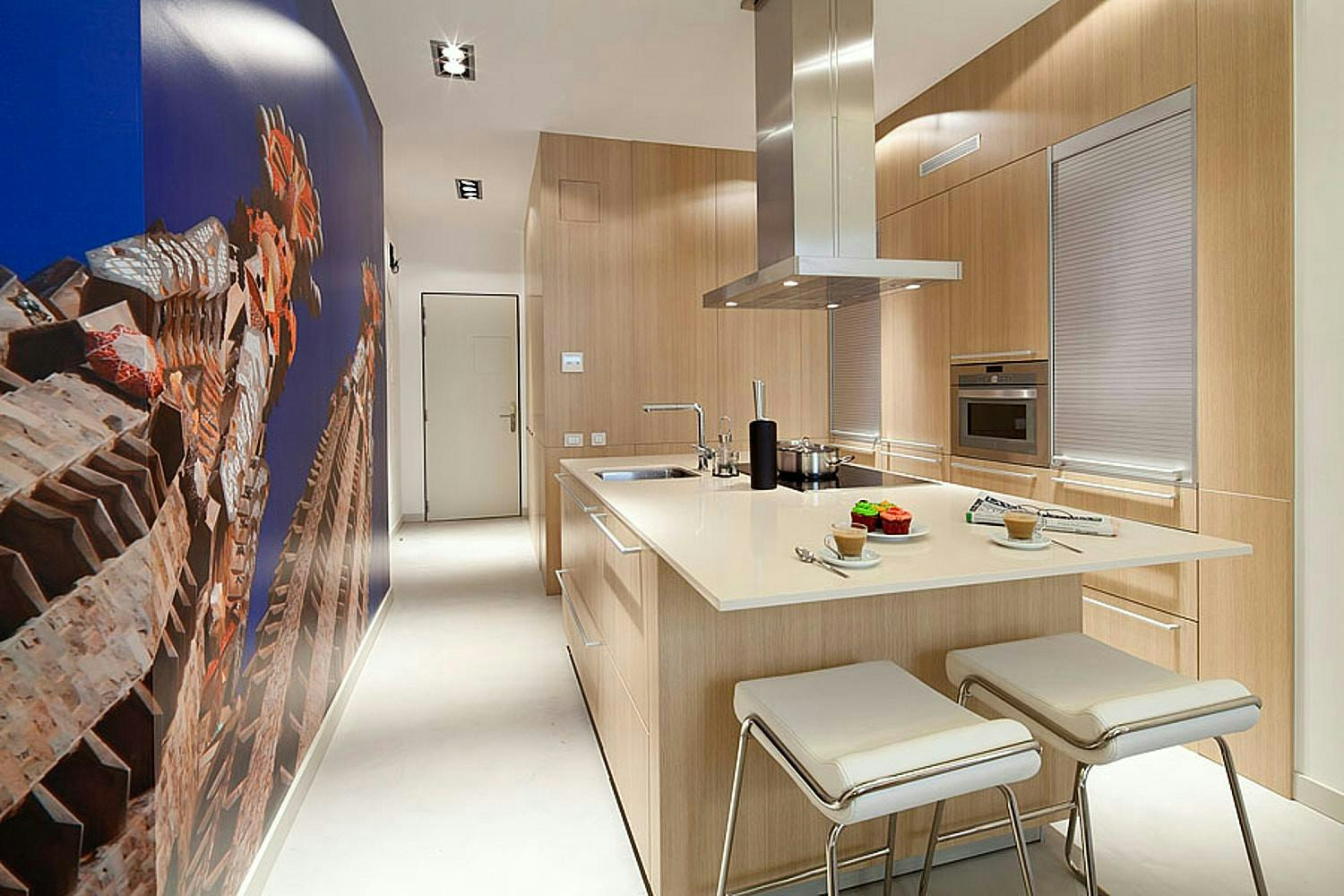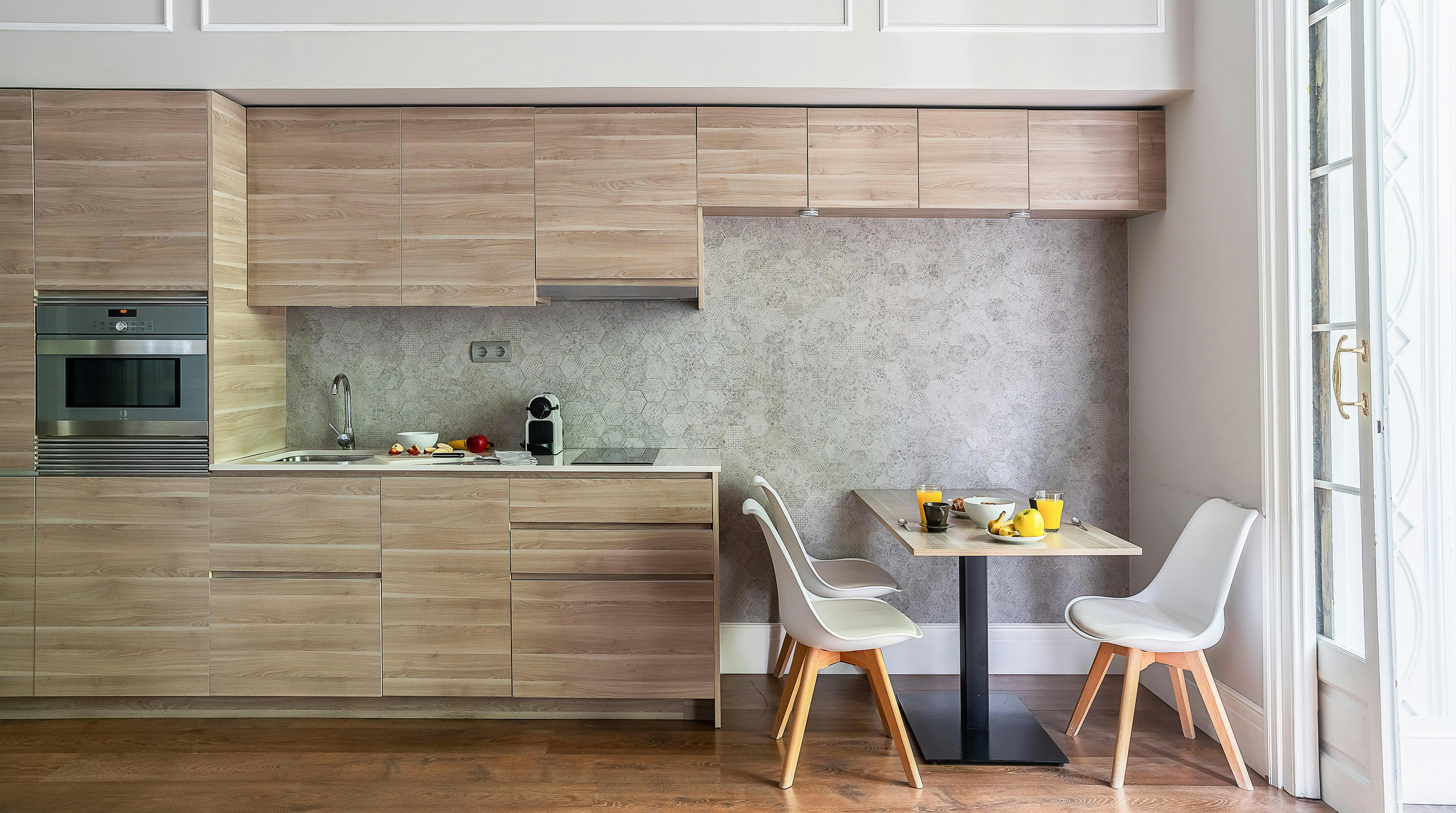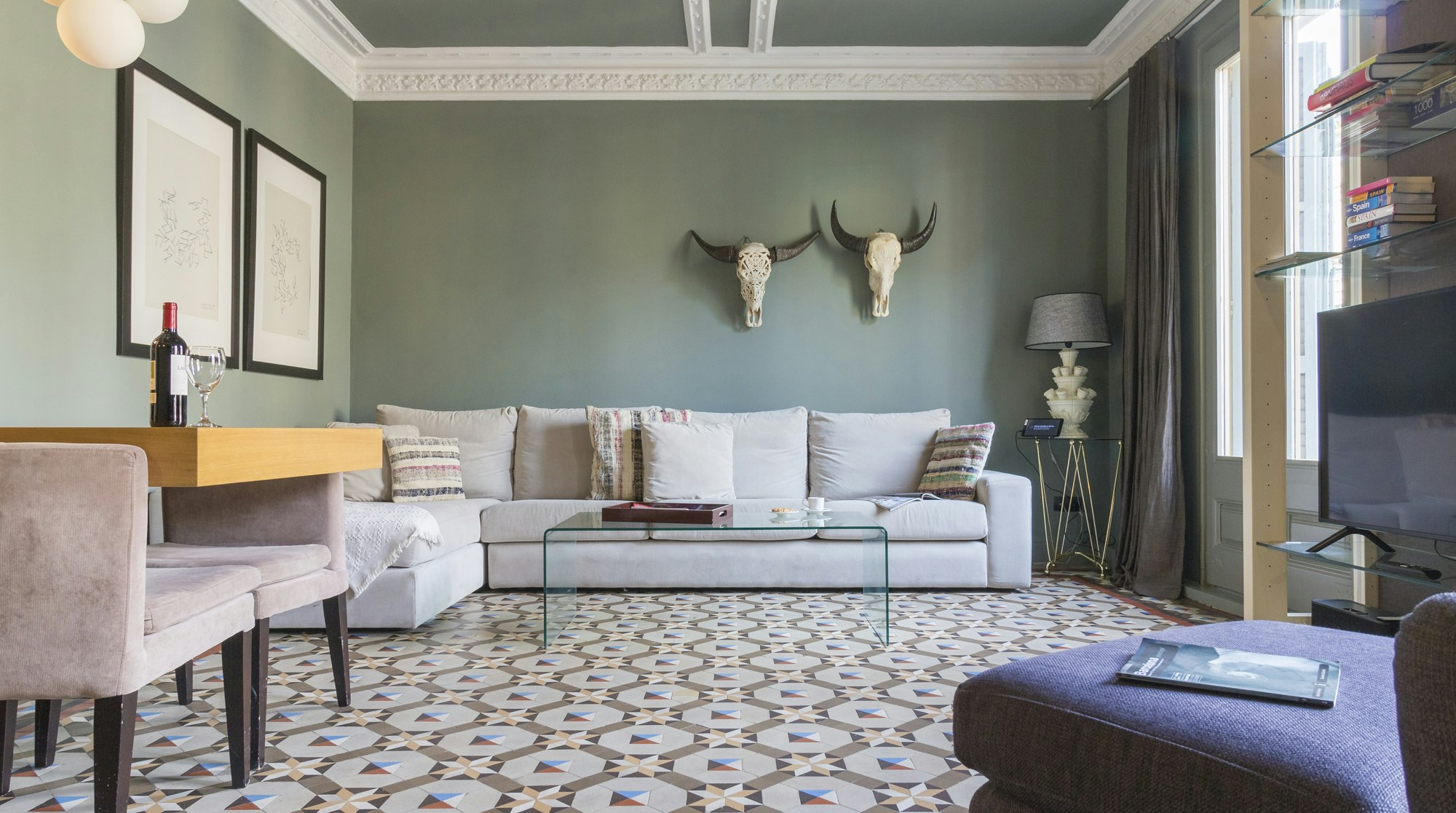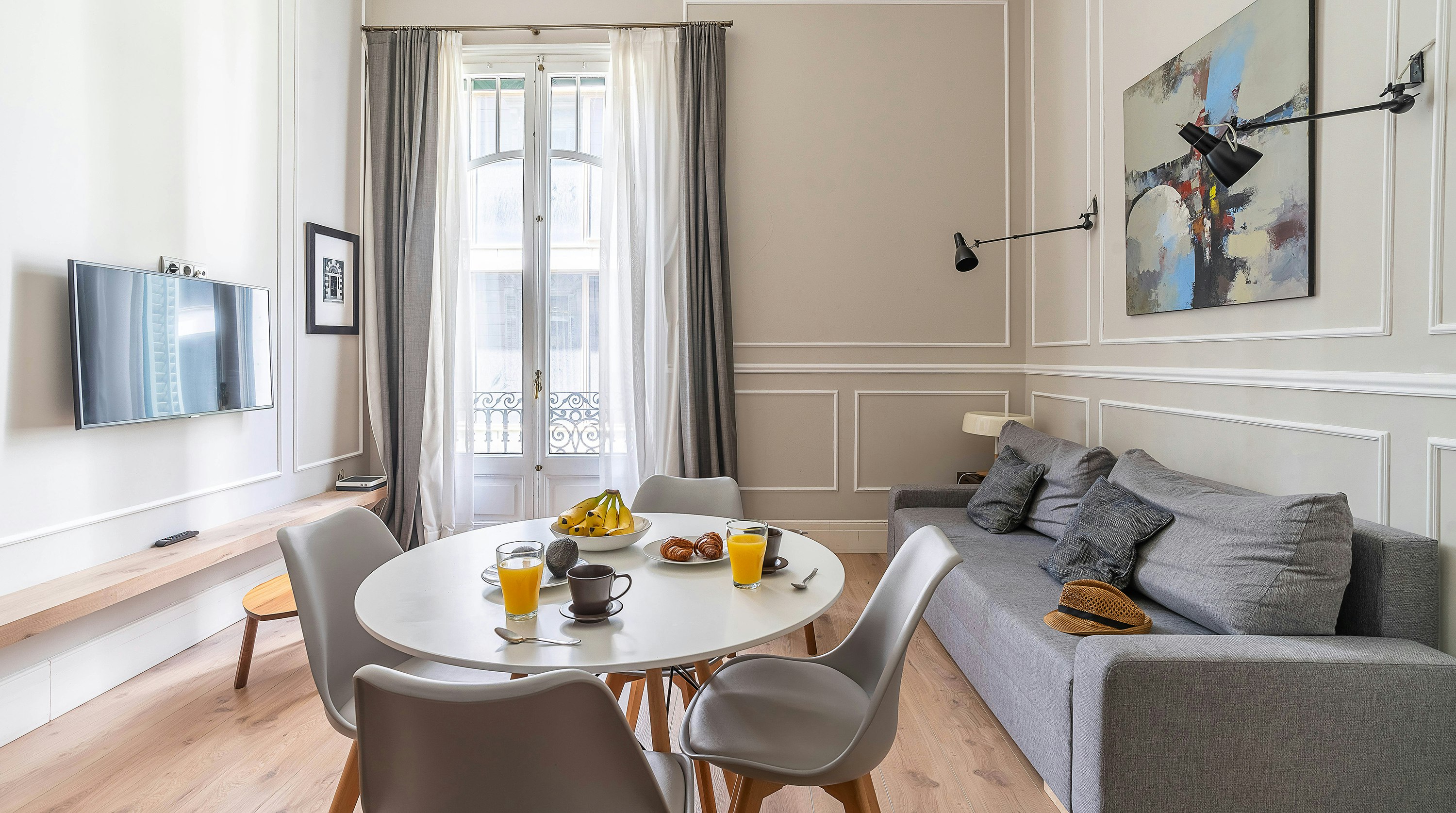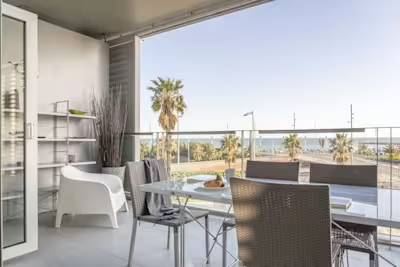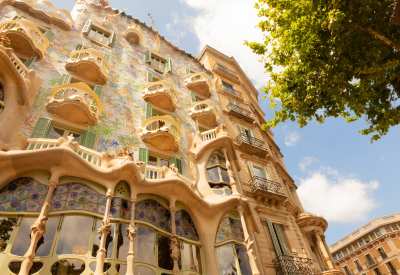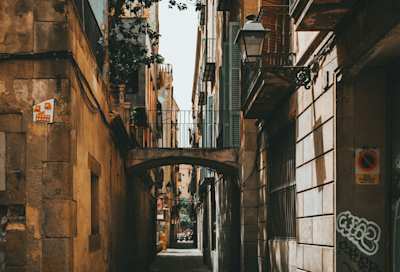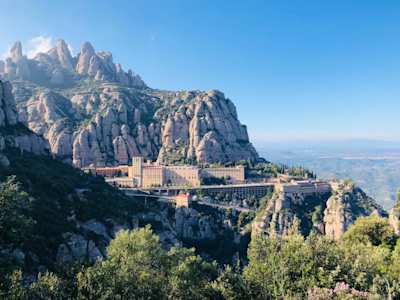Where To Stay in Barcelona: All You Need to Know
Take a look at our guide to Barcelona, and the unique neighbourhoods that contribute to its charm.
~
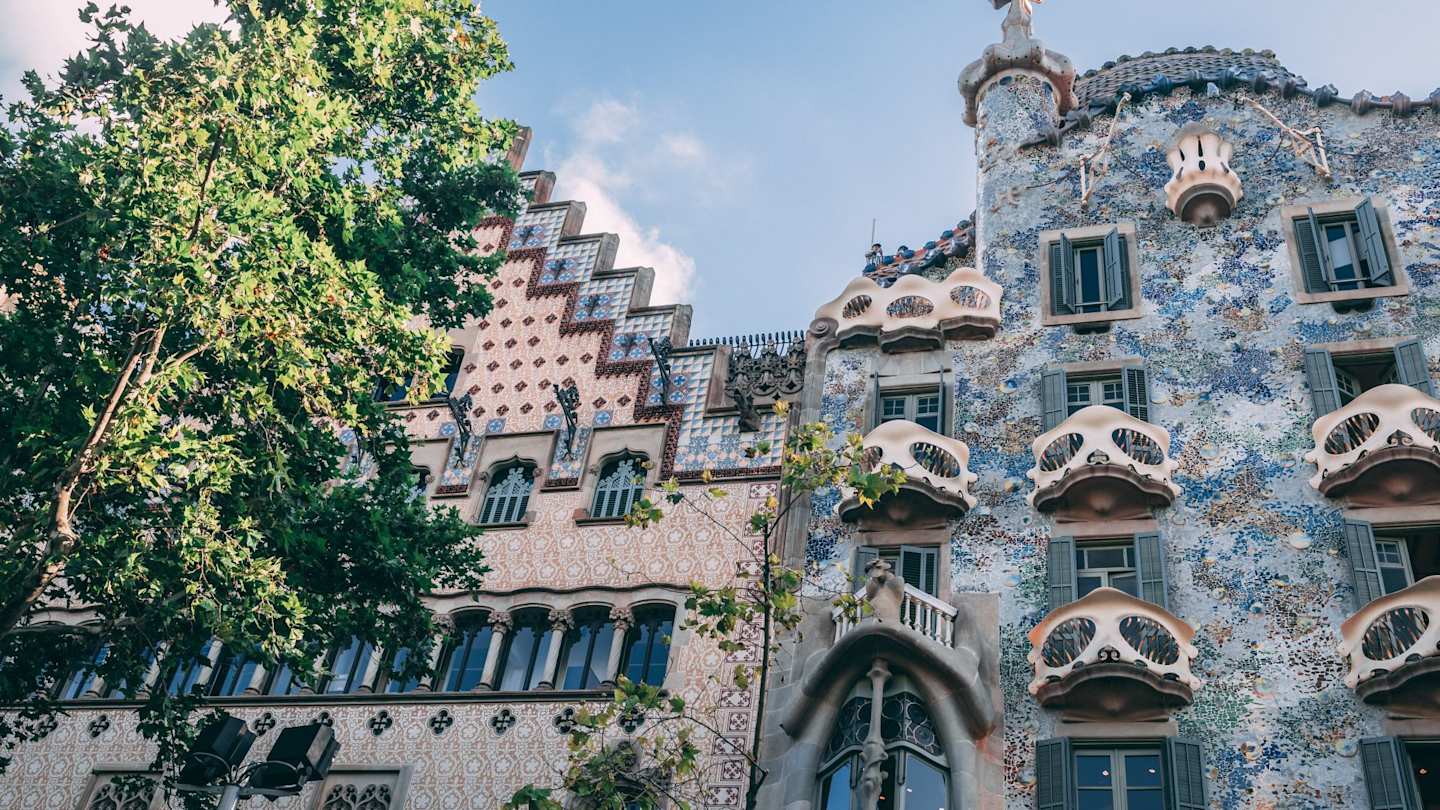
When it comes to European hotspots, Barcelona is a buzzing hub. It truly is a ‘jack of all trades’ kind of city. From beaches and luxury rooftop bars to independent art galleries and world-famous museums, there's really nothing Barcelona can’t do. When it comes to where to stay in Barcelona, the choice of neighbourhood can seem overwhelming, with so many interesting areas to choose from. Let us here at Plum Guide help you out with this list of the city's best neighbourhoods.
Gothic Quarter
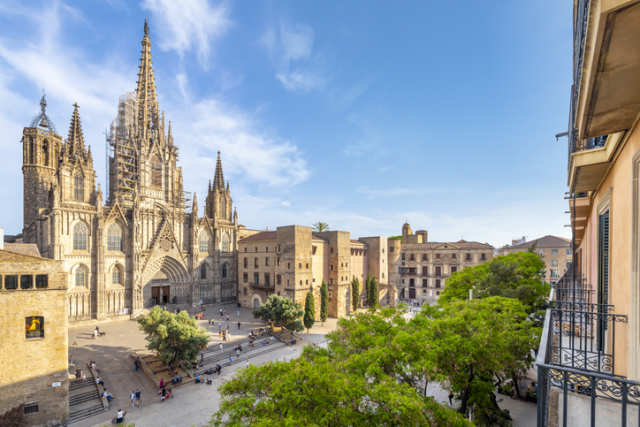
View from a balcony of the Barcelona Cathedral in the Gothic Quarter district of Barcelona, Spain
For those looking for the quintessential Barcelona experience, the Gothic Quarter (also called Barri Gòtic or ‘Gothic’) is where to stay in Barcelona. This charming neighbourhood is where you’ll find sites of the old Roman village that previously stood where Barcelona is now. For a first time visitor, the Gothic Quarter is an instantly hit, with its narrow cobbled alleyways, hidden courtyards and crumbling buildings. Pay a visit to the Barcelona Cathedral. Constructed between the 13th to 15th centuries, it’s a major architectural wonder. When you’ve worked up an appetite, head to one of the tapas bars overlooking the cathedral if you enjoy a street performance or two. If not, wander further into some of the alleys for a quieter experience and lower prices. In the evening, the shops close and the bars open. Carrer de Salomo Ben Adret is quite the street, and not just because it’s home to the Ancient Synagogue. Start with a decadent meal at La Alcoba Azul, then enjoy some wine at La Vinateria del Call]. If you're not quite ready to call it a night, listen to live music at IDEA bar.
El Born
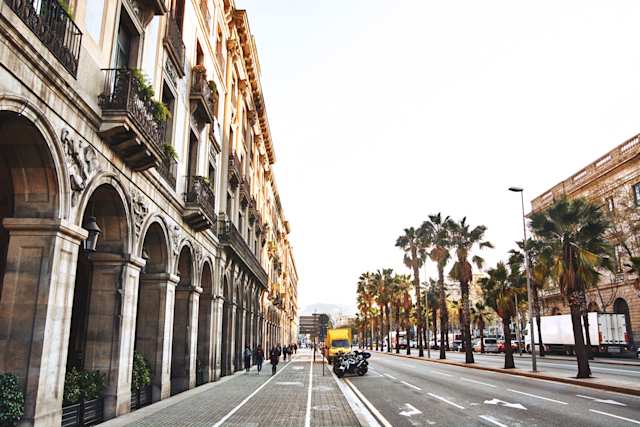
Avenue in the Born district of Barcelona
In many ways, El Born has it all. Walking just 10 minutes leads you to the beach in one direction, the Barcelona Cathedral in another, and Ciudadela Park in a third. It's a great base for anyone in Barcelona for a long weekend. You'll feast like a king here, with dozens of restaurants, bars and cafes at your doorstep. From a glance, El Born looks a whole lot like Gótico, and the two neighbourhoods definitely share a lot of characteristics. That said, there are a few things that really stand out. The Basilica of Santa Maria del Mar is a sight you won't want to miss. Built between 1329 and 1383, it is a shining example of Catalan Gothic architecture. Next up, browse the neighbourhood's selection of boutiques, and once you're all shopped out, grab some ‘pintxos’ at Sargardi and then bar hop to some of the more upscale spots like the secret bar Paradiso. Head to Dux for (probably) the best gin and tonic you'll ever have in your life.
Raval
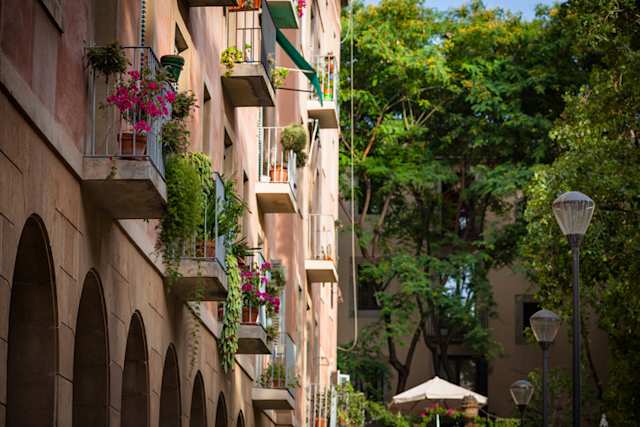
Balconies on an old building near Plaza de Vicenc Martorell in the El Raval Neighborhood, Barcelona
If there’s any Barcelona neighbourhood having a moment right now, it’s Raval. One of the city's most diverse neighbourhoods, as well as one of its more art-focused, lots of young millennials and expats are flocking to this area in droves...and with good reason. In terms of location, Raval is pretty central. Within about 10 minutes, you can reach La Rambla, a pedestrianised, tree-lined street with vendors selling everything from fresh flowers to gelato. La Boqueria public market is a must-see (and its food offerings are a must-taste). Aside from its street art, Raval is home to the Museu d’Art Contemporani de Barcelona (MACBA), the Gran Teatre del Liceu and the Centre de Cultura Contemporània de Barcelona.
La Barceloneta
Do you love the beach? Then La Barceloneta is probably where to stay in Barcelona. As part of Ciutat Vella, the nearest neighbourhoods are Gothic, Raval and Born. During the summer months, Barceloneta is filled to the brim with sunbathers, swimmers and shoppers. While most people associate La Barceloneta with the beach — and understandably so — there are plenty of other activities, too. The Catalan History Museum is a unique way to soak in the local culture, while Sant Miquel del Port's church showcases baroque-style architecture. Come evening, watch the sun go down from the Catalan History Museum rooftop — there’s an area that’s free to anyone who doesn’t feel like ordering an expensive cocktail (but let's be honest, you'll probably order one anyway). Party the night away at the W Hotel’s Eclipse bar, a whole 26 floors high in the sky.
Eixample
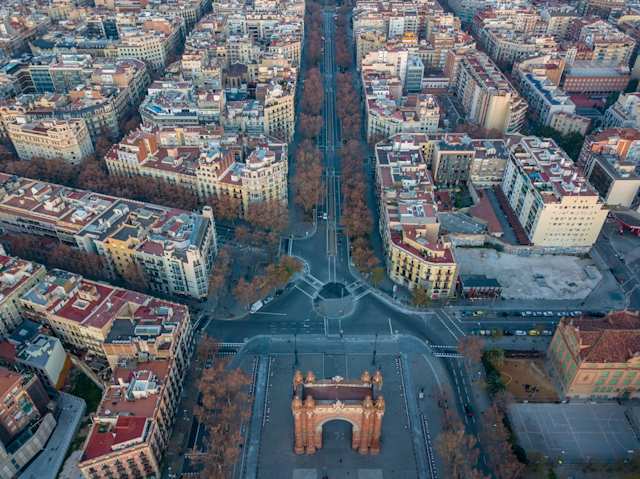
Aerial view of Barcelona
If you need a break from the crumbling but charming cobbled streets of Ciutat Vella, Eixample is a nice reprieve with its grid-like organisation and broad avenues. There are two main areas: Eixample Esquerra (left) and Eixample Dreta (right). Within these two, there are then several sub-neighbourhoods like Sant Antoni, Antiga Esquerra and Nova Esquerra.
The Eixample district is huge compared to other areas of the city. (No wonder it used to be its own separate city.) Known for its grid-like organisation, sunny skies and diverse collection of shops, restaurants and nightlife, it's easily one of the most sought-after districts to live and work. When it comes to spending a day in Eixample, a visit to Sagrada Familia is a must. (We recommend booking your ticket in advance to beat the queue.) As detailed as the facade is, the inside of the building is equally impressive. Feast your eyes on lavish designs made of wood, stone, ceramic, leaded glass and wrought iron. For shopping and eating, Passeig de Gràcia is a great starting point. It’s similar to Rambla de Catalunya but more upscale and less crowded. Here, you’ll find award-winning restaurants like Etapes and Instagram-worthy cafes like Brunch & Cake. Plus, nearly every designer imaginable has a store within a couple of blocks.
Sant Antoni
While Sant Antoni technically belongs to the Eixample district, we think it deserves a spotlight of its own...so we're giving it one. Home to museums, historical monuments and some delicious eateries, this otherwise tranquil neighbourhood makes a lot of noise within Barcelona's food scene. Bookworms, take note: Sant Antoni has an entire market dedicated to antique books. Every Sunday, you can sift through second-hand tomes, vintage posters and postcards to your heart's content. There are also quite a few design stores and art galleries, like the Escalera de Incendios – part gallery, part coworking space, part art agency. Food-wise, as we've alluded to, you’re in for a real treat. Besides the Sant Antoni Market, there are some really good tapas bars like Quimet & Quimet. For drinks, try Fàbrica Moritz for beer or one of the area’s vermouth bars. For cocktails, try Bitter Cocktail Bar.
Sagrada Familia
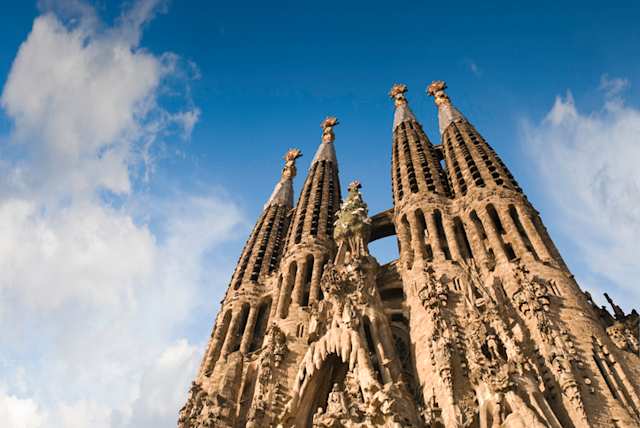
A close-up of the Gothic details of La Sagrada Familia, Barcelona, Spain
Named after Antoni Gaudí’s famous unfinished masterpiece, this family-friendly neighbourhood would feel a bit more residential if it didn’t house the city’s most iconic monument drawing in swathes of tourists. That said, there's plenty of shopping, eating and rooftop-hopping to be had. Looking at a map, you’ll find Sagrada Familia in an almost perfect square. Though unfinished, the Sagrada Familia basilica is so tall that it instantly serves as a reference point when navigating the barrio. In short, it’s next to impossible to get totally lost. There are quite a few delicatessens here, ranging from butchers to chocolatiers. Go local by trying the Catànies, a traditional Catalan snack of roasted and caramelised almonds and topped with chocolate. And don't forget to explore the colourful local food markets in neighbouring El Clot, too.
Gràcia
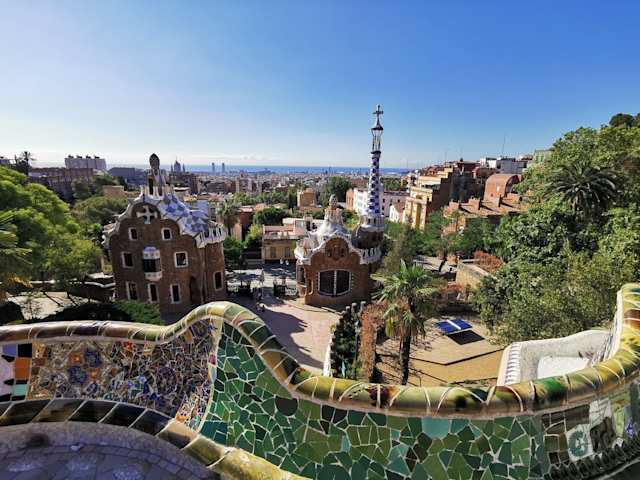
The colourful tiles and designs of Park Güell, Barcelona
If you’re looking for a small-town feel inside big and bustling Barcelona, Gràcia is your go-to. Great for families and solo travellers alike, you’ll quickly fall in love with the quaint courtyards, designer boutiques and some fairly stunning cityscape views. It’s no wonder Gràcia is one of the best neighbourhoods in Barcelona – a coveted place to live, work and play. Start your morning with an early visit to Gaudí’s Park Güell, beating the heat and the crowds. Come lunchtime, snag an outdoor table in Plaza del Sol (or one of Gràcia's other 14 plazas). Work off your meal with a stroll along Carrer Verdi, where many of the neighbourhood’s top boutiques line the street. For a local experience, head to one of Gracia’s theatres, like Teatre Lliure. It’s the perfect excuse to learn some Catalan (or escape the rain, on the very slim chance you’ll get any).
Plaça España

The Museu Nacional d'Art de Catalunya and the Magic Fountain in Barcelona, Spain
Plaça d'Espanya is located just outside the city centre yet still easily accessible to anywhere via metro or bus, making it a great option as a place to stay in Barcelona with the whole family. Most people head to Plaça for the Magic Fountain music and light show but there’s plenty more to this plaza than meets the eye. Art lovers will gravitate toward the Palau Nacional d’Art de Catalunya (MNAC), which, aside from the art itself, is one of the best spots for viewing the Magic Fountain show. And on your last night in town? Don’t leave without toasting to a great trip from the top of Montjuïc.
El Poble-Sec
Located just south of the main tourist thrust, Poble-Sec is a hip haven for foodies and art lovers alike. Located in the Sants-Montjuïc district of Barcelona, Poble-Sec is far enough removed from the crowded streets of Ciutat Vella, yet culturally significant enough to attract a local community of artists and creatives. Theatre is prevalent here, with some dating back to the late 1800s and early 1900s. El Molino is known for musical performances as well as flamenco, burlesque and cabaret while Teatre Condal specialises in comedy. Hungry yet? Carrer Blai is one of the most popular food streets in all of Barcelona, thanks to its tapas culture and ‘pintxos’ as low as 1 euro each.
El Poblenou
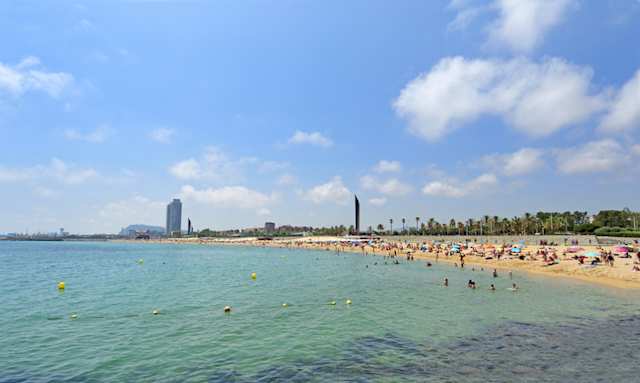
People swimming at El Bogatell Beach, Barcelona, Spain
This former industrial district has had quite the makeover over the past few decades. It’s the go-to spot in Barcelona for that buzzy startup culture. Kickstart your day in Poblenou with a crash course in art and design. The Design Museum of Barcelona focuses on four design types: space, product, information and fashion. Then there’s Addicted to Life, an art gallery, shop and occasional bar. For food and drinks, take your pick from the tapas bars along Rambla del Poblenou. Once a month there’s the Palo Market Fest (not to be confused with the city of the same name in Silicon Valley) which brings together musicians, food vendors and local designers. Another huge perk of staying in Poblenou is the beach. While most tourists flock to Barceloneta, considerably fewer people wander to the beaches here making for a more tranquil time. In winter, there are some fairly good surfing waves too. In terms of green spaces, Parc del Centre del Poblenou is great for walking, biking or having a picnic on the grass.
About Plum Guide:
Decided on the perfect neighbourhood? Now all that's left is to decide on the perfect Plum home in Barcelona to stay in. Each and every Plum awarded home on our site has been personally vetted by our (exceptionally) meticulous home critics – they check everything from water pressure to interior design – to make sure that, when you stay in a Plum vacation home, you'll always get the high standards you deserve.
